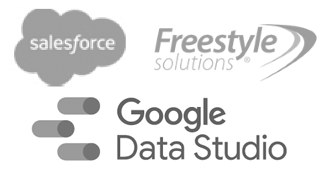Do you know who are your best customers? Many times the answer depends on whom you ask.
The owner of the company may mention the first, most valuable client that launched the business. The accountant may cite the largest account from a spending standpoint. Most marketers agree that customers are not all alike – and do not respond alike. For direct marketers, your best customer is very likely the one who bought from you yesterday. In other words, “what have ya’ done for me lately?”
The 80-20 rule of business also holds true for direct marketers: 20% of your customers will generate 80% of your response and revenues.
But which customers make up that valuable 20%?
Recency, Frequency, & Monetary Analysis (RFM) helps you find the golden 20% segment most likely to respond.
Now you might think that the specific product buying cycle is more important. For instance, in an association, a lapsed member who just renewed yesterday is not likely to renew again next week. However, consider this: they might still be likely to respond to another offer – perhaps a book purchase, a training class, or registration for an annual conference. RFM helps analyze these buying patterns.
RFM analysis scores each customer in your database to predict which customers are “likely to respond” to your next promotion. Recency scoring can point out, for instance, that the “best customers” mentioned by client staff have lapsed, and now are someone else’s best customers. Frequency scoring can determine that large, one-time buyers cannot necessarily be counted on for repeated purchases.
Recency and Frequency trump Monetary Value – that is why it is “RFM” Analysis (and not FMR or MRF).
WiseGuys uniquely enables RFM with point and click efficiency, for practical, quickly available solutions. Think of RFM as a sorting process with dependent variables. First, RFM performs a major sort on Recency, then a minor sort on Frequency within Recency, and finally another minor sort on Monetary Value within both the Recency and Frequency score.
The result is a matrix of 100 “cells” (5 x 5 x 4) that have roughly the same number of customers in each cell – a more precise approach than simply sorting values independently. It is a method preferred by statisticians for doing response testing, and other analysis. Customers in the cell with the highest scores are your best customers…treat them well!
 Professor’s Corner:
Professor’s Corner:
And if you are marketing to any of the following audiences, you absolutely need to use RFM to predict response.
- Consumable products – if you are selling pet food, nutritional items, or other consumables, RFM is highly recommended. RFM is less valuable for products with longer buying cycles.
- “Mature audiences” – including seniors who open their email less frequently (or not at all).
- Gift buyers – particularly gift catalogers sending holiday mailings, with new product ideas each season.
- “Shelf life” promotions – where a mailing piece may have more staying power than email. Typically, these may be wholesalers/distributors whose catalogs get saved for many months.
- Top-of-mind audiences – when timing is everything. For instance, real estate agents or remodeling contractors may send monthly postcards, hoping you remember them when you are ready to make plans for your home.
- Synergy between postal and web – many direct marketers find that postal plus digital equals more than the sum of the parts. And RFM can help analyze your campaign results. See www.usps.com/directmail/_rtf/FY07CatalogWhitepaper.rtf for details on how postal and email can work together.
As always, call today to take advantage of our free 15-minute consulting session, “The Professor is in” at 703.941.8109.









